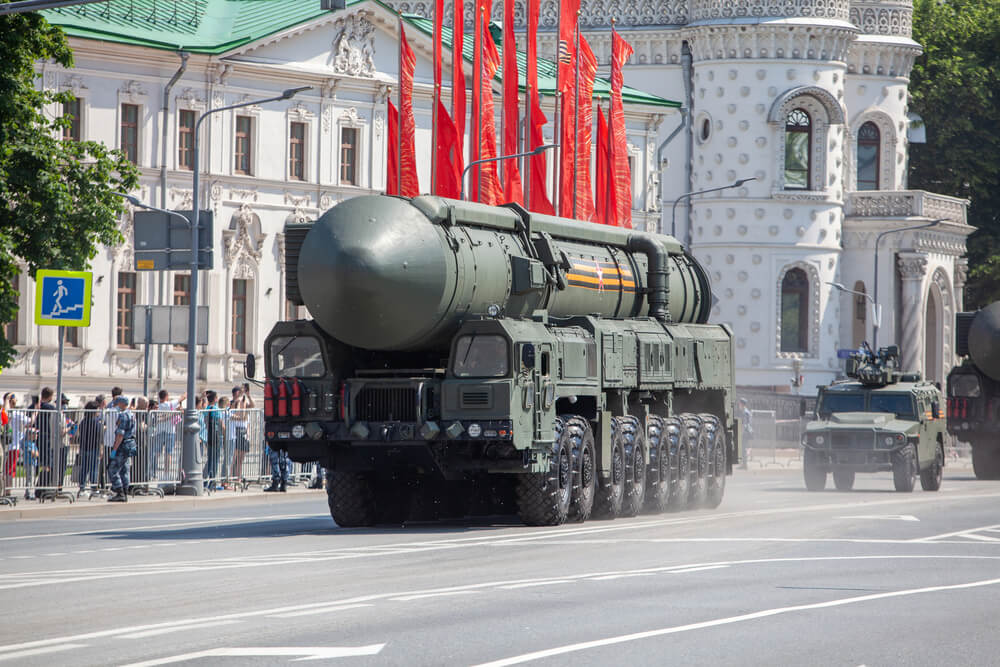US President Donald Trump’s approach toward Russia has been dominated by his push to end the country’s war against Ukraine.
But the administration has an opportunity to make progress on another urgent national security imperative: nuclear arms control.
In fact, after returning to office this year, Trump wasted little time in calling for negotiations with Russia and China to “denuclearize ... in a very big way.”
To be sure, reaching any new agreements, especially one that includes China, will take time.
But as a first step, Russia and the United States could immediately return to implementing a currently moribund agreement that is already on the books: the 2010 Treaty on Measures for the Further Reduction and Limitation of Strategic Offensive Arms, better known as New START.
Though New START’s February 2026 expiration is fast approaching, reinvigorating it and resuming a regular dialogue could lay the foundation for more far-reaching agreements, demonstrating to the world that the US and Russia can still cooperate to manage nuclear risks.
A powerful brake
New START caps US and Russian strategic nuclear arsenals at 1,550 deployed warheads and 700 deployed long-range missiles and heavy bombers each.
The treaty contains an elaborate data-sharing, monitoring, and on-site inspection regime to verify compliance. Like earlier US-Russian arms-control agreements, it has served as a powerful brake on unconstrained nuclear competition.
Both sides faithfully implemented New START for its ten-year duration, and in early 2021, both agreed to extend it for five years.
Following Russia’s full-scale invasion of Ukraine in February 2022, however, the treaty all but collapsed, as did bilateral dialogue intended to maintain strategic stability.
Biden’s administration did attempt to engage the Kremlin on the issue of strategic stability, but Putin rejected these overtures
In February 2023, Russian President Vladimir Putin announced that Russia would suspend its participation in New START, including its verification provisions, owing to US support for Ukraine.
A few months later, the US responded with legal countermeasures that essentially mirrored Russia’s move.
While then-President Joe Biden’s administration did attempt to engage the Kremlin on the issue of strategic stability, Putin rejected these overtures, stating that the US could not hope for strategic stability if it sought Russia’s “strategic defeat” in Ukraine.
Putin’s shift
But the situation has changed. In a little-noticed shift after Trump took office, Putin called for bilateral engagement on arms control without explicitly insisting on a full halt to US military aid to Ukraine as a precondition.
Putin’s shift and Trump’s stated desire to “denuclearize” has created an opportunity for the US and Russia to prove that nuclear arms control is still viable.
Of course, if past is precedent, negotiating a new deal to replace New START could take many months, if not several years.
Talks will need to address thorny issues that have bedeviled attempts to reach new arrangements over the past 15 years.
If New START expires with nothing to replace it, there would be no agreed upon limits on the world’s two largest nuclear arsenals for the first time in decades
These include so-called non-strategic or tactical nuclear weapons, China’s growing nuclear arsenal, strategic missile defenses, and advanced conventional strike capabilities.
If New START expires with nothing to replace it, there would be no agreed upon limits on the world’s two largest nuclear arsenals for the first time in decades.
By contrast, restoring New START and resuming a strategic-stability dialogue would provide a needed foundation from which to pursue more far-reaching follow-on arrangements.
As an additional near-term step, both sides could make a political commitment to adhere to the treaty’s limits beyond its expiration date, while they negotiate new caps and attempt to bring China into the arms-control fold.
A condition for any future arrangements with China
Even in the face of a growing Chinese arsenal that is not subject to treaty limits, keeping the New START limits in place makes sense.
China is not projected to become a nuclear peer of either country in terms of deployed warheads for at least another decade, and the US would still have enough force flexibility to delay that outcome.
Moreover, an active US-Russia arms-control regime is probably a necessary condition for any future arms-control arrangements with China.
 With over 85% of the world’s nuclear warheads between them, the US and Russia have a special obligation to reduce the existential threat posed by these weapons
With over 85% of the world’s nuclear warheads between them, the US and Russia have a special obligation to reduce the existential threat posed by these weapons
It also could remove incentives for China to rush to parity with Russia and the US – an outcome that both Russia and the US want to avoid.
A US-Russia commitment to remain at the New START force levels, combined with the pursuit of new caps, could reduce the need for the US to make costly investments to build up its forces at a time when its nuclear modernization effort is already facing major budget and schedule challenges.
With over 85% of the world’s nuclear warheads between them, the US and Russia have a special obligation to reduce the existential threat posed by these weapons.
Returning to New START compliance and resuming dialogue on strategic stability would be an immediate step in that direction.
Samuel Charap is Distinguished Chair in Russia and Eurasia Policy and a senior political scientist at RAND. He served in the Arms Control Bureau at the US State Department.
Kingston Reif, a senior international/defense researcher at RAND, served as US Deputy Assistant Secretary of Defense for Threat Reduction and Arms Control.